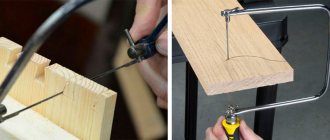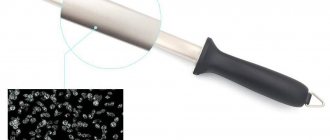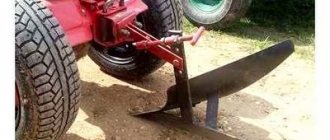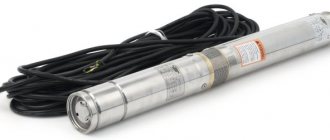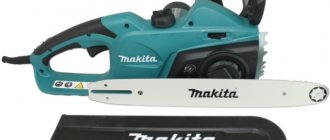One of the most difficult tools to use. The most compact models of pneumatic impact wrench look similar to an industrial impact electric drill. The most powerful and heaviest pneumatic impact wrenches are somewhat reminiscent of industrial rotary hammers and hammer hammers, so heavy and inconvenient to use.
A pneumatic impact wrench can be considered a relative of an electric screwdriver, with the only difference being that the torque force can differ hundreds of times. Instead of a turning force of tens of Newton meters at the output of the electric motor gearbox, the compressed air drive produces a torque on the nut that is two orders of magnitude greater.
What does using a pneumatic drive provide?
The abandonment of an electric drive in favor of a pneumatic one is partly a necessary measure. For impact tools operating under extreme shock load conditions, the use of a pneumatic vane motor has solved several serious problems:
- The drive from an air motor is cheaper and easier to manufacture than an electric brushed motor. The parts and main components of the impact wrench are capable of withstanding peak shock loads of 50 and even 100 times;
- The pneumatic drive is safer to operate. The absence of an electric cable, commutator brushes, contact buttons and switches in the design of the air impact wrench eliminates the risk of a short circuit or fire;
- Long service life of drive units and hammer couplings. Any power tool under load, especially shock, generates a large amount of heat, so you have to take breaks to cool the bearings and couplings.
The pneumatic impact drive does not have this drawback and can operate for a long time practically without any maintenance or cooling. Therefore, the vast majority of industrial and professional models of impact wrenches are manufactured only with a pneumatic drive. The exception is tools for tightening nuts measuring 6-10 mm, for example, when assembling household appliances, electrical appliances, and furniture.
For your information! For comparison, the simplest electric impact screwdriver with a commutator motor, converted into a wrench, is capable of working only with bolted joints with a tightening torque of no more than 300 N*m, while its resource is limited to only 50-70 hours.
To extend the life of an electric impact wrench, you will need to change the brushes, and after another 150 hours, the reduction gear. There are no such problems in a pneumatic impact wrench; to extend the operation of the impact tool for another 1000 hours, you just need to lubricate the thrust bearings and change the textolite drive blades in the engine.
Operating principle of a pneumatic impact wrench
The design of a low-power pneumatic impact wrench looks no more complicated than a conventional electric hammer drill, with the only difference being that a blade drive is installed instead of a brushed electric motor. The typical design of the tool for one of the simplest and most popular air impact wrenches I3125 is shown in the diagram.
What's inside a pneumatic impact wrench
The pneumatic impact wrench consists of the following parts and assemblies:
- The device body is made of aluminum alloy;
- Dry sump vane air motor;
- Impact or hammer system;
- A valve system that controls the air supply to the pneumatic chamber of the impact wrench drive;
- Square or hexagonal shaft with locking spring stop for mounting a replaceable nut head.
The blades of the pneumatic drive and the hammer clutch, which ensure shock operation, are considered the most loaded and subject to wear. Even when compressed air purified from dust is supplied, a significant amount of abrasive microparticles still enter the pneumatic chamber, sharply increasing the wear of the relatively soft plastic and the moving part of the disc coupling. Therefore, the air impact wrench is periodically washed and cleaned of dust.
The most complex and loaded impact system consists of a flywheel mounted on a shaft, a cam coupled with a clutch pusher, a reflector, a return spring and a roller. This is the most expensive component of a pneumatic tool, since all parts must be made of special grades of steel that have undergone heat treatment and hardening.
How the tool works
The impact wrench does not require any special preparation to get started, only minor adjustments are required:
- You must first connect the impact wrench to the air line using a standard quick-release pneumatic plug connector;
- Air is pumped into the compressor receiver to a pressure of at least 6 atm;
- Fix the working head of the required size on the impact wrench shaft, place the nut and rest the tool against the end surface of the wheel rim or assembly part;
- Install and with slight force press the pneumatic impact wrench to the nut, smoothly squeeze out the hook of the pneumatic valve, hold the device in the desired position until the fasteners are screwed in and the tool goes into impact mode.
From the moment the pneumatic valve opens, the air spins the shaft of the six-blade motor and drives the clutch. The passage of a nut along the thread, as a rule, does not create much resistance, so the tool shaft spins up to high speeds. The entire ingenious design of the shock system in this case works like a regular spring clutch.
It takes 1-2 seconds to pass 20-25 turns of the main thread of a stud with a pneumatic impact wrench. As soon as the resistance to rotation of the nut increases to a critical value, the output shaft with the working head of the pneumatic impact wrench actually stops. The flywheel shaft rolls by inertia along the plane of the disk onto the wheel protrusion and, overcoming the elastic resistance of the spring, hits the pusher and at the same time engages with the clutch. As a result, the smooth rotation of the shaft turns into a series of gentle blows.
But, unlike the latter, the head of a pneumatic impact wrench makes micro-oscillations not parallel to the axis, as happens in a hammer drill, but in a rotational motion, as if tightening the nut with a series of micro-impacts. Each rotation of the impact wrench shaft is one blow; at first they are perceived as vibration, then a hum and, finally, clicks. The torque cut-off is activated and the impact shaft of the pneumatic tool stops.
How to choose a pneumatic impact wrench for your garage
Any model of pneumatic impact wrench works on the same principle. Compressed air is supplied to the tool through a fitting through hoses. It comes from a compressor or a stationary pneumatic line. Under high pressure, the air drives the impact wrench rotor, which is connected to the spindle. The reverse function is designed to change the direction of rotation.
Main types of air impact wrenches
Each impact wrench is designed to perform specific tasks. If you choose the right model, the tool will be convenient to reach difficult places and productivity will increase. Based on their design, pneumatic impact wrenches are divided into two types:
- Direct. Externally, impact wrenches resemble the shape of a pistol. The spindle axis is parallel to the rotor axis of rotation, thereby increasing the torque.
Straight pneumatic impact wrench is used in easily accessible places - Angular models of impact wrenches have low torque. This is due to the perpendicular location of the spindle axis relative to the rotor axis of rotation. The tool creates greater force, due to which rusty nuts can be unscrewed.
Angle pneumatic impact wrench is convenient for working in hard-to-reach places
In addition to their design, impact wrenches differ in their operating principle. More precisely, this factor can be called a function that helps to better cope with problematic bolts. According to this parameter, the tool is divided into two types:
- Impactless impact wrenches only have torque. The tool is used for assembling and disassembling assemblies with new bolts. Due to the low force, the possibility of thread breakage is eliminated.
A hammerless impact wrench can be used to tighten hardware where precision and accuracy are required. - A pneumatic impact wrench works on a similar principle, but a series of frequent blows is added to the torque. At different stages of tightening the fasteners, they can be long or short. The tool creates the maximum impact peak at the final stage, due to which the reliability of the connection is improved or the problematic hardware can be untwisted.
Use an impact wrench to remove rusted nuts and bolts.
Attention!
Each type of impact wrench uses its own heads. Black attachments are suitable for percussion instruments, but simple ones cannot be used, as impacts will tear them. When choosing a tool with an impact function, you need to understand that not all of them work on the same principle. Impact mechanisms vary between impact wrenches. The most common are three types:
- Twin hammer means double hammer. The tool develops high torque at the start. Two impacts occur per spindle revolution. The mechanism is suitable for high loads.
- Rocking Dog creates one shock per spindle revolution. At the start, the tool develops an average speed. The mechanism is suitable for medium loads.
- Single ratchet is a ratcheting mechanism system. It is used in angle-type pneumatic impact wrenches. The mechanism is suitable for light loads.
It is not recommended to use the pneumatic impact wrench for purposes other than its intended purpose. The operating mechanism may fail or the fastener thread may break.
Torque
The parameter is considered the main one, since this is the power of the pneumatic tool. The measurement is calculated in Newtons/meter. The greater the torque, the more powerful the compressor is needed. This parameter requires special attention. If you buy a weak impact wrench, it will not cope with rusty nuts. The new fastener will not tighten properly. In the process, it will spontaneously disconnect. It is also impossible to choose a tool with a large margin. From overvoltage it will break the threads.
Important! A wrench with a torque of 1.5 to 3 thousand Nm is suitable for working with large fasteners. To remove and install the rims of a passenger car, a torque of 100 to 700 Nm is enough.
Spindle size
The knot is often called a landing square. The working heads are mounted on it. The more powerful the tool, the larger the spindle. The parameters are shown in more detail in the table.
Compressor compatibility
Each air impact wrench is designed for a specific air consumption. In addition, the tool needs to create the required operating pressure. Compatibility with a compressor is considered successful if it creates a pressure 2 bar greater than that required by the impact wrench. Productivity must be 20-30% more, otherwise there will not be enough air for work.
The compressor is selected compatible with the impact wrench in terms of performance and pressure
Features of drum models
Pneumatic impact wrenches were primarily used for work on mechanical assembly lines of industrial enterprises and car service centers. Unscrewing a 18-25 mm nut on a wheel hub by hand is quite hard work; unscrewing a 45-50 mm fastener without a wrench turns into a complex and unsafe attraction with socket heads and huge levers.
Small tricks for ease of working with a pneumatic impact wrench
The most common models of pneumatic impact wrenches are a pistol or hammer type body, weighing from 2.5 kg to 10 kg, with a tetrahedron or hexagonal extension - a rod and a joystick for connecting a pneumatic hose. Working with such a device with one hand, like a screwdriver, is very inconvenient, so manufacturers of pneumatic tools use some tricks:
- Almost all impact wrenches, with the exception of the most low-power models, are equipped with an additional adjustable and reinstallable handle for the second hand, the position of which can be adjusted in the most convenient way;
- For pneumatic impact wrenches designed for constant work with one type of wheel, hooks, brackets or stands are used, with which you can hook onto the disk or lean on the rim, and thereby relieve your hands during work;
- The reverse system allows one movement of the pneumatic valve rod to change the direction of rotation of the impact wrench shaft with one hand. Experts call the reverse of a pneumatic hammer one of the most convenient and reliable technical solutions among all types of impact wrenches.
Pneumatic hoses must be made with a spiral twist, like a telephone cord. It is convenient to hang the tool on a stand or mounting ramp hanging from the ceiling; you can even drop it from a small height, this will not lead to injury or breakage of the impact wrench.
The presence of a torque control system makes the work smooth and safe; you don’t have to worry about breaking the thread or injuring your hands. Often, to tighten the wheel hub nut, a torque of 200-300 N*m is required. This means that a force of almost 100 kg must be applied to the manual wrench.
The use of compressed air makes the process of loosening or tightening nuts by impact as safe as possible. Drive breakage or puncture of the pneumatic line do not pose a threat to the life and health of the worker.
Important! The design of the pneumatic drive has a tool holding trigger. While the impact wrench is in your hands, the air regularly rotates the impeller. If the tool gets out of your hands, the machine will close the air valve.
Advantages of Pneumatic Impact Wrenches
The archaic, at first glance, pneumatic drive system in practice has proven itself to be one of the most convenient and safe to use. The pneumatic impact tool system has been used in mechanical engineering for more than a hundred years, and there is no real alternative that can replace the pneumatic impact drive.
Electric impact wrenches with lithium batteries or mains power are used primarily for assembly work, in threaded connections where you need to quickly tighten a nut measuring 8-12 mm. A manual electric impact wrench does not represent significant competition for a pneumatic tool, since the presence of a planetary gearbox and expensive batteries make the impact wrench too heavy and expensive to maintain and replace consumables.
For your information! When tightening nuts on the wheels of a regular passenger car, the drive of a pneumatic impact wrench at the final pressing stage is capable of developing a power of up to 15 kW.
Impact pneumatic impact wrenches were created primarily for loosening rusted couplings and nuts. In this matter, the pneumatic impact scheme for loosening large-diameter nuts turned out to be unrivaled; only heavy hydraulic impact wrenches, which develop a rotation force 10-20 times greater than a lightweight tool with a pneumatic drive, can be compared in efficiency.
In the line of pneumatic impact wrenches, impactless models with a gearbox and ratchet clutch have been developed and are widely used, which makes it possible to very accurately adjust the tightening torque. Pneumatic impact wrenches are used for assembling critical parts and housings, and for repairing transmissions and individual chassis parts. The maximum torque on the shaft of a non-impact impact wrench does not exceed 120-150 N*m, but the accuracy of the applied force is maintained up to 1N*m.
Features of choosing a tool
If you want to decide how to choose a screwdriver with maximum efficiency, you need to focus on the scope of its application.
You can assemble compact structures for a summer house and garden, for example, when installing equipment on a children's or sports ground, using a battery model. For such purposes, little torque is required. It is better to choose a half or quarter inch cartridge. Car enthusiasts need more powerful equipment. Therefore, choose models with a torque of at least 250-800 Nm. The chuck should be half an inch. Units with on-board power supply are inexpensive, but will be convenient on the road.
If you are working with large fastening bolts, then you cannot do without a powerful impact wrench. For work in hard-to-reach areas, angle wrenches are used, for which a square shank of the required size is selected.
Screwing or unscrewing a bolt will not require much effort if you use universal impact wrenches. This is a high-quality and reliable tool that will become assistants to masters in many situations.
Pneumatic impact wrench with adjustable tightening
Experienced mechanics know very well that it is not enough to tighten the nut to what is called the “all the way” level. The nut will hold firmly on the wheel stud only if the tightening force ensures elastic deformation of the stud and nut. If you tighten the nuts with a hand wrench, then the tightening torque and the required force can be caught quite easily by hand; only a little experience is needed.
When working with a pneumatic tool, it is almost impossible to “catch” with your hands the amount of torque developed by the impact mechanism. Therefore, to work, for example, with lug nuts on wheels with light alloy wheels, pneumatic impact wrenches with an integrated overrunning clutch are used.
A small device allows you to adjust the compression force of the spring; accordingly, the more the elastic element is deformed, the higher the operating limit of the overrunning clutch will be.
The force is adjusted using a movable ring dial or a four-position lever. In the latter case, the tightening torque is determined by four fixed values; this adjustment scheme is more reliable and easier to operate.
Main characteristics
The set of parameters and performance characteristics used by the manufacturer to describe the capabilities of pneumatic impact wrenches is somewhat different from traditional power tools.
The list of the most important parameters includes:
- Torque, as a rule, a range of values is indicated, for example, 30-3000 N*m;
- Air flow and operating pressure. This information is extremely important for choosing the right air compressor;
- Maximum rotation speed of the shock shaft;
- Diameter of screwed threads, separately for studs and bolts made of high-strength alloy steels;
- Range of tightening torque adjustment indicating the step or nominal and maximum value;
- The weight of the tool and the time required to tighten the nut onto a clean thread.
Sometimes they indicate the fitting diameter of the fitting for the air hose, or the size of the connector and the cross-section of the square hole for the extension or head. Russian and Chinese models usually use a pneumatic fitting in a 9 mm oxygen hose and a ¼ inch square seat for an impact nut.
For your information! Hammer impact coupling type may be specified. For example, the vast majority of imported impact wrenches, both original European and Chinese copies, are in most cases equipped with a Twin Hammer double-action impact clutch.
Torque and rotation speed
The pneumatic drive of the impact wrench has very good characteristics, best suited for loosening any nut, even the most rusty one. The blade motor of an impact wrench is simultaneously similar to both a turbine and an automatic transmission torque converter.
Immediately after opening the valve, due to the arrival of a shock air wave, the drive is capable of providing a very large torque, even more than in the passport. Therefore, at the time of opening the valve, the pneumatic impact wrench must already be installed on the nut; this allows one or two blows to strip off any rusty threads.
The lightest models of impact wrenches such as the Chinese AIW1366 develop up to 600N*M in impulse, with a nominal 400N*M. Heavier Chicago Pneumatics are capable of delivering up to 1100 N*m, however, with four times the air flow.
As the impact wrench shaft spins up to operating speed, which is 6-9 thousand. rpm, torque drops to 30-50 N*m. When tightening the nut, the reverse process occurs, the accumulated energy of the shaft turns into shock torsional vibrations at a level of 800-900 N*m.
Heavy manual pneumatic models have lower rotation speeds and at the same time higher tightening torques. For comparison: a Russian-made heavy manual impact wrench IP3128 weighs 8.6 kg and produces a tightening torque of 1600 N*m, at a speed of only five thousand revolutions per minute. This is enough to tighten the nuts on a 42 mm thread.
The portable version of the IP3115 pneumatic impact wrench weighs as much as 13 kg and develops a torque of up to 3200 N*m, which allows you to tighten threads with a diameter of 60 mm.
Dimensions and tools
Most of the models in the Russian Federation are represented either by the long-known classic IP series impact wrenches, or by Chinese counterfeits of well-known European brands. Serial pneumatic IPs are produced in only two models – “3115” and “3128”. The difference is felt primarily in the quality of the metal used. In IP, as in BOSCH or Sumake, or any other branded impact wrench, chrome-vanadium and manganese steels are used. Other materials, even with a ceramic coating, after six months of operation under shock load conditions are erased and hardened with a change in linear dimensions.
Chinese and Russian pneumatic impact wrenches are designed and produced to meet the 40 mm head fit standard, adopted more than 20 years ago, while Europe produces square fits with ½-1 inch adapters. It turns out that for Russian pneumatic impact wrenches you will have to work harder and look for modern attachments with working heads. The standard set comes with a set of eight units. If the impact heads are out of order, replacing them with imported ones will be quite difficult.
Connection to compressor
Among sales representatives involved in retail sales of special tools, including impact wrenches, the presence of a pneumatic drive is for some reason presented as a disadvantage of this scheme. But this statement, as a rule, does not entirely correspond to reality and practical experience.
The pneumatic receiver found in any garage compressor functions as an energy storage device. Neither a hydraulic nor an electric impact wrench has such a reserve. If it is necessary to break a nut that has been sitting on a rusty thread for more than 20 years, neither an electric nor a hydraulic tool will be able to unscrew the connection, only a pneumatic hammer.
What interferes with normal operation of the compressor?
Inconvenience due to the need to use a compressor to work with a pneumatic impact wrench can only arise in two cases:
- The compressor unit has been incorrectly selected for the parameters of the pneumatic impact wrench;
- An air hose of low quality or with a small flow area was used;
- Quick-release fittings or connecting nipples are installed, ensuring connection of the air line in one movement.
An approximate diagram of the organization of the air network in the garage is shown in the figure.
The most important characteristic for an air impact wrench is the required air flow provided by the compressor unit. For small models, the required flow rate is 170-220 l/min. compressed air. Sometimes manufacturers of budget versions of compressors indicate in the data sheet the flow rate of 180-220 liters at the entrance to the compressor unit; for compressed air it turns out to be 4-5 times less, or 50-60 l/min. This is clearly not enough to turn even light Chinese impact wrenches, not to mention Bosch or Jonnesway.
If the compressor power is not enough, then you can resort to a little trick:
- Replace the standard 40-50 liter receiver with a more capacious 100-120 liter one. This should be enough for two tightening of the nuts of one or two wheels;
- Install a reinforced welding hose with a cross-section of at least 18 mm. Typically, for a pneumatic impact wrench, 9 mm is sufficient, but with a line length of more than 5 m, increasing the cross-section helps increase the power and force of the tool by 30%.
- If you have to work with several pneumatic tools, then the presence of an auto-connector greatly speeds up the process of connecting the impact wrench to the compressor. But under one condition - the cross-section of the nipple must be at least 8 mm. If the compressor is cheap and low-power, then the outlet nipple costs no more than 4 mm.
In this case, you have to abandon the quick-release connector and cut the hose directly into the receiver or, more preferably, install an expensive adapter with a larger cross-section.
In addition, you will need a collector for condensate and oil dirt, which flies out of the receiver in excess. You can save money, but there is a direct threat of the pneumatic impact wrench freezing during prolonged operation in low temperatures.
Bosch models
Bosch impact wrenches have always been and remain the most expensive and most durable pneumatic tools for the garage. Only the branded American models of the same company, Chicago Pneumatic, can boast a higher price; their models, even in the most budget version, do not come under $300.
To service the wheels of your own passenger car, you do not need a wrench with the most outstanding characteristics and parameters. To tighten a nut, 150 N*m is enough; to unscrew the most rusty bolt, 300 N*m is more than enough. Several models fall within these parameters, for example, Bosch 628.
Due to the use of a large amount of metal in the design, the weight of the instrument was quite large - 2.4 kg. At the same time, the developers managed to combine good tightening torque characteristics - 30 N*m and a modest air consumption of 6 l/s. For connection, a regular oxygen hose with a cross section of 10 mm is used. The model costs only $230.
If you need a pneumatic impact wrench for professional work and car repair, tire fitting and chassis maintenance, you can use the more expensive and powerful Bosch 622 model with improved characteristics:
- The rotation torque is 900N*m, this is enough to unscrew the nuts on the wheels of a truck;
- Air flow -18 l/s or 1.08 m3/min, a powerful compressor station will be required;
- The seating chuck is made to size 3/8 inch, the hose is 12 mm;
- The weight of the percussion instrument is 5.6 kg.
The cost of a pneumatic impact wrench is $480-520.
The most powerful impact wrench produced by Bosch, presented on the market of non-professional tools, is considered to be the Bosch 593 model. Weighing 9.6 kg, the pneumatic wrench provides a tightening torque of 1700 N*m, which is enough to tighten 50-60 mm nuts. The capabilities of the impact wrench, as well as the cost of $1800, will be clearly excessive for a home garage.
Pneumatic impact wrench Sumake
Of all the existing models of pneumatic impact wrenches, the Taiwanese brand Sumake has the most controversial reputation. On the one hand, the tool has proven itself to be very reliable, with a long service life of the strike group and characteristics proven in practice. Sumake pneumatic impact wrenches can be found with equal frequency in both home workshops and car repair shops. The reason for its popularity lies in its low price and good supply of auxiliary materials.
For example, the STM3007K model costs 8,900 rubles. develops a tightening torque of 542 N*m, which is even higher than that of Bosch tools. The weight of the impact apparatus is 3.5 kg, and the air flow is 480 l/min. In addition, the impact wrench comes with a case for storing the device and a set of working heads from 9 to 24 mm. The design is equipped with a half-inch square chuck and a ¼ F receiving fitting.
The second model STC554 will cost about 10 thousand rubles. The weight of the tool is only 2.1 kg, with an air consumption of the same 480 liters. Unlike the 3007K model, the C554 impact wrench produces more than twice the torque, up to 1300 N*m. At the same time, the manufacturer does not complete the pneumatic impact wrench with a free set of ten impact sockets; the device comes with packaging, a certificate and a passport for the product. The price difference is only 10%, with the apparent manufacturing costs of the C554 impact wrench being significantly higher than the M3007K.
In practice, according to user reviews, the C554 turns out to be practically indestructible, even under extremely high loads. The second impact wrench, M3007K, begins to “burn” and completely fails after a couple of weeks of use. The only thing that confuses you when you first get acquainted with the C554 is the somewhat boxy-angular design of the model, which is inferior in appearance to even the cheapest Chinese AIW pneumatic impact wrenches.
How to choose a pneumatic impact wrench
Choosing an air impact wrench is easy - just pay attention to a few mandatory parameters:
- tool weight and handle material. A heavy and bulky impact wrench will be difficult to work with for long periods of time and in hard-to-reach places. The rubber-coated handle is also an important detail. It absorbs vibration and prevents your hand from slipping and freezing in the cold;
- maximum torque. The most important characteristic. The highest level determines how the impact wrench will cope with large nut sizes. Tightly screwed fasteners also require high torque;
- air flow. Here you need to pay attention to the volume of the compressor receiver with which the impact wrench works. It must produce 30-50% more air to operate efficiently;
- equipment. A case, a set of sockets of different sizes, an oiler, a fitting - all these are useful little things that will come in handy in any car service center or garage. In addition, sets are often cheaper in terms of the total cost of the component elements.
When choosing an air impact wrench, be guided not only by the opinions of experts, but also by customer reviews. It is on the basis of them that our top pneumatic impact wrenches are compiled.
Eastwood models
Among budget models of pneumatic impact wrenches, the Eastwood line is considered the most inexpensive and affordable. The design uses a large amount of duralumin alloys and plastic. The handles and base of the body are made of polymers; hardened steel is used only for the impact coupling.
Instead of rolling bearings, bushings are installed on bronze liners. The device turned out to be inexpensive and at the same time simple, there is practically nothing to break. A distinctive feature is the severe wear of the pneumatic drive parts, so impact wrenches are practically not used for mounting wheels; its scope of application is limited to small fasteners of 9-12 mm.
In any repair there will be many areas of work with bolted connections where there is no need to use powerful and heavy impact wrenches. Eastwood line of pneumatic impact wrenches can be used as an auxiliary tool. Often, most of the fasteners, nuts and bolts are screwed onto the threads with a cheap impact wrench, and only pressed with a broach using something powerful, like Sumake C554. As a result, the service life of the main pneumatic impact wrench for 20-25 thousand rubles can be extended almost twice.
Pneumatic impact wrench with adjustable torque
Most modern impact wrenches are equipped with a torque control feature. The main task of this function is to prevent fasteners from overtightening, thread or head breakage. Adjustment will be useful for tightening relatively small nuts and bolts with a high torque tool. The fasteners on the M8 will most likely be damaged if you tighten them with a tool without a regulator, with a maximum torque of 1000 Nm.
The principle of operation of an adjustable pneumatic impact wrench is to limit the supplied air, as a result of which the torque is reduced. For example: if you set mode number 3 on a Fubag pneumatic impact wrench at 900 Nm, its torque will drop to 450 Nm, which will allow you to confidently tighten the M14 fasteners. The number of modes on different instruments may vary, but on average there are from 3 to 5. Information about operating modes is indicated in the documentation supplied with the tool. Each individual device has its own characteristics of adjustable power.
Jonnesway pneumatic impact wrenches
The products of the well-known company Jonnesway, located in Taiwan, are considered by most craftsmen and professional mechanics to be a compromise in price and workmanship. Despite the fact that plastic and aluminum alloys are widely used in the design of Taiwanese impact wrenches, the product resource is sufficient for a long service life in very difficult conditions.
Jonnesway JAI256 impact wrenches are often the first purchase of required equipment for a small tire shop. The price for an impact device that produces a tightening torque of 980 N*m is 22 thousand rubles. may seem too high, but, in fact, the tools of the Taiwanese company are considered quite reliable and effective. It is clear that for this money you can buy a couple of cheap Chinese pneumatic impact wrenches, but they would be enough literally until the first fall on concrete. The seemingly small impact device weighs 3 kg, this once again confirms that the manufacturer did not skimp on metal.
For constant work, the lightweight Jonnesway JAI0964, weighing only 1.9 kg, is more suitable. With an air flow of 140 l/min, the pneumatic impact wrench produces a tightening torque of 930 N*m. The price of the device is a third less than that of the previous model, but the tool’s service life is half as long.
To work with wheels of heavy trucks and tractor equipment, heavy impact wrenches of the JAI138-1418 series are used. The weight of the device is 8-10 kg and the tightening torque is 2.7-3 kN*m, requiring certain dexterity and skills in working with pneumatic impact wrenches.
How to choose the right compressor for a wrench?
Even the most powerful impact wrench will not be able to work without a compressor. But how to choose the right compressor for a pneumatic impact wrench? Here are two rules:
The air flow of the impact wrench must be equal to or less than the compressor capacity. Only then will you be able to work without serious interruptions.
And so, if we have an impact wrench with an average air flow of 210 liters per minute, then it is best to choose a compressor that will provide a performance of at least 320 l/min at the output; we take into account the actual performance of the compressor, which is usually 15-20 lower than stated %.
What if the compressor performance is lower? Then the whole system will work intermittently. That is, the impact wrench will not only not reach its rated power, but will also not be able to work without interruption.
What if the compressor performance is clearly lower than what is required by the impact wrench? There is a chance that the impact wrench will work... but the compressor will stop producing the required amount of air from time to time because it will take time to pump the air in the receiver to the required pressure.
A compressor is necessary for a tire workshop or car service in any case. However, it cannot be hidden that operating comfort will only be ensured by a powerful compressor with a large receiver. Compressor power is of great importance. But the effectiveness of the strike is even more important.
Angle pneumatic impact wrenches
Any vehicle, car or bicycle, contains in its design a huge amount of threaded fasteners, bolts and studs, much smaller in size than the nuts on wheels. To unscrew the nut by 12, you do not need a pneumatic hammer with a tightening torque of even 100 N*m; a tool capable of delivering 50-70 N*m is sufficient. But even this in most cases turns out to be too much.
Moreover, working with a classic pneumatic impact wrench under the hood or from the chassis of a car is extremely inconvenient. The large dimensions and weight of the impact tool (more than 2 kg), in conditions where it is necessary to unscrew a nut or bolt practically with outstretched arms, make the standard version of the impact wrench of little use.
In this situation, ratchets or, in other words, angled pneumatic impact wrenches show the best results. Why corner ones? Because the working head is located on the impact wrench at an angle of 90° to the body axis. Due to their similarity with a ratchet wrench, many models of angle pneumatic wrenches are commonly called ratchets.
Characteristics and capabilities of angle wrenches
Essentially, a pneumatic ratchet is a universal drive that can accept any nut head, extension, Phillips screwdriver or slot. A pneumatically driven impact wrench allows you to make 99% of all detachable connections on a car, and with proper skill, you can use it as a screwdriver and even a brush.
Almost every manufacturer of pneumatic impact wrenches has its own models of angle tools; in many ways they are similar, but there are also minor differences. An example of a typical representative of angle pneumatic impact wrenches is the Sumake 5553 model
Basic characteristics of a pneumatic tool:
- Impact wrench weight 1.2 kg;
- The tightening torque is 60 N*m, this approximately corresponds to the maximum effort of an adult, physically strong person;
- The seat size for the head is ½ inch;
- Air consumption – 112 l/m;
- Impact wrench body made of metal;
- Pneumatic drive, there is a rotation reverse function, which can be used to “swing” and loosen rusted fasteners.
For your information! The service life of an angle wrench, even under conditions of daily use, is at least 3000 hours.
The elongated shape of the body and the convenient location of the trigger and switches allow you to control the operation of the pneumatic tool with one hand. During idle rotation without load, the shaft gives 2.5 rps, which allows you to control the exit of the nut from the thread without the risk of missing it and losing it in the inspection hole.
Tips for using a pneumatic impact wrench
To extend the life of your pneumatic tool, it is recommended to listen to some advice from professional craftsmen.
- Do not let the tool fall.
- It is necessary to ensure that the pneumatic tool is kept out of the area where it could be run over by a car.
- To increase tightening power, do not overpressure the system. This leads to rapid wear of the unit.
- You should not hold the impact wrench under load for a long time, as this mode of operation will quickly damage the impact mechanism. If a “stuck” nut or bolt does not come off within 5 seconds, then you should stop operating the unit and replace it with a more powerful one. It is also recommended to use penetrating liquids that are in the arsenal of any car owner for problematic bolts: gasoline, antifreeze, kerosene, diesel fuel, brake fluid. It is best to apply a special liquid, for example, WD-40, to the threaded connection.
- Do not store the tool near fire or in places with high temperature and humidity.
If you follow these simple recommendations, your tool will become an effective assistant when performing labor-intensive operations, will last a long time and will justify the investment in it.
